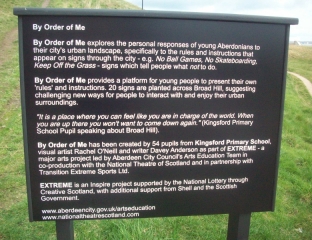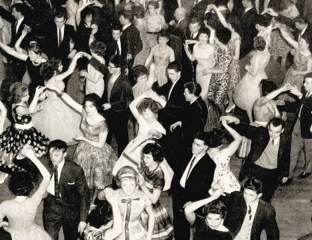Are Ye Dancin’?: The Story of Scotland’s Dance Halls – And How Yer Dad Met Yer Ma! – Eddie Tobin with Martin Kielty.
Apparently published 6 months ago, this seems to have a had a marketing push recently so the Voice’s David Innes hangs on grimly as erstwhile promoter Tobin’s history of Scottish dancehalls spins him and his two left feet around an over-slipperened dancefloor.
My favourite story about dancehalls isn’t included in Tobin’s memoirs of the heydays of small town ballrooms and city Locarnos.
Abridged, it concerns a Borders village school full of NE lorry drivers in the early 1960s pre-motorway days, billeted there temporarily for the weekend due to the A74’s closure by snow.
As all the boys wash and dress, apply Brylcreem and polish their shoes preparing to go to the Saturday night dance, one worthy, possibly a Charlie Alexander’s driver, is lying on his mattress, unshaven, smoking and reading the paper. When asked if he’s intending getting ready to demonstrate his slow-slow-quick-quick-slow prowess to the good burghers of Kirkpatrick Fleming, his response is, “Na na, I’m nae muckle o’ a dancer, but be sure and gie’s a shout eence the f***ing starts”.
To anyone who has ever smuggled a half bottle into the toilets at Aberlour’s Fleming Hall, who stood back in awe and no little fear as the Buckpool Boot Boys terrorised 1970s weekends in Cullen and Rothienorman, who “bonded” with a member of the opposite gender in the lanie behind St K’s, or who used the business end of a Guild Bass as an improvised bat as the missiles flew at a Grantown-Rothes contretemps at Archiestown (that Kabul to the locals), Are Ye Dancin’? will be like reading a diary of their mis-spent youth.
Although Tobin’s account of those supposedly-innocent days concentrates mainly on his own reminiscences of wheeling and dealing behind the scenes to promote his own acts, considerable space is given over to the personal anecdotes of agents, managers, patrons and performers from the heyday of dancehalls from post-war onwards, even touching on the modern club scene.
the ensuing three nights of frenetic frugging and torso-torturing twisting were looked forward to all week
In addition, despite much of the collection of memories focussing on palaces of hedonistic delight far removed from our own shared and blessed region of Scotland, the mere mention of Bapper Hendry and Albert Bonici and the premises and acts they guarded fiercely, will delight anyone of that era who ever had to transact with these two lovable but canny entrepreneurs.
The 60s and 70s dominate, a period during which, in the words of the opening credits to Friday evening’s Ready Steady Go, “the weekend starts here” and the ensuing three nights of frenetic frugging and torso-torturing twisting were looked forward to all week as social release by dance addicts holed up in offices and factories throughout the land.
It is a worthy companion piece to Torry’s own incorrigible rogue, Peter Innes’s, marvellous ‘Fit Like New York?’ although not nearly so in-depth or painstakingly-researched. Even at 180 pages, it’ll take no more than half a day to read and wallow in memories of the joys, sorrows and ever-present optimism of youth.
Glance down the index and assimilate the names of temples of weekend pleasure long gone, falling apart or still limping along and you’ll be back in ‘68, anticipating that sweaty crush, the hellishly-blended aroma of smoke, perfume, beer, hair oil, damp and nail varnish in the Broch’s Dalrymple Hall, the Railway Hall, Inverurie, St Congan’s in Turriff, Elgin’s classy Two Red Shoes or the Beach Ballroom itself.
As Wordsworth once wrote, possibly as he anticipated a Friday night huckle-bucking to The Lakes Showband at Grasmere Parish Hall,
Bliss was it in that dawn to be alive,
But to be young was very heaven.
Are Ye Dancin’? Eddie Tobin with Martin Kielty. Waverley Books. 180 pages. £9.99.


